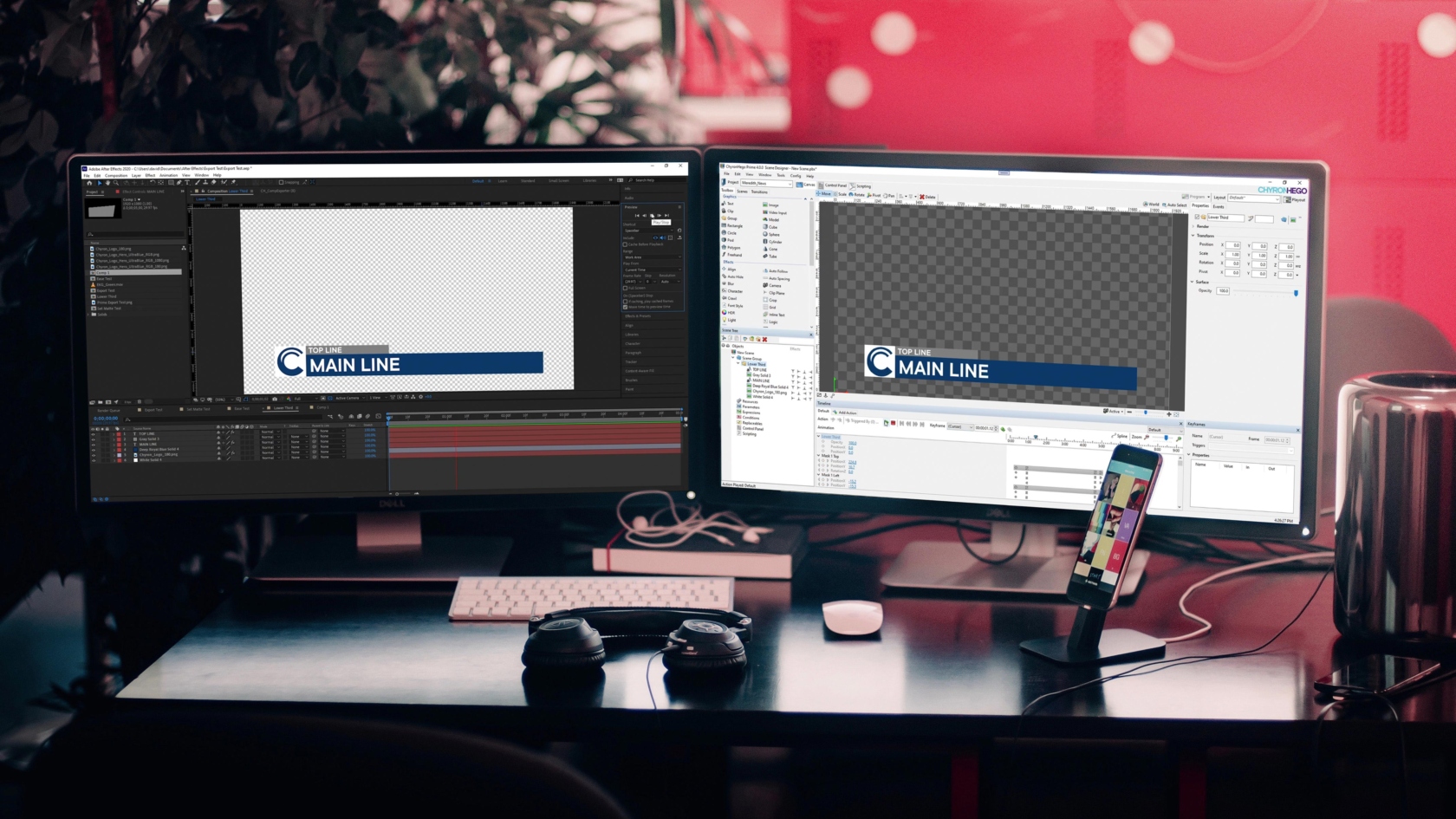
PRIME 4.0: After Effects Import for Fully-Editable Graphics
We know.
We’re not the first kid on the block to introduce an After Effects import feature for our graphics design application. But, the new After Effects import feature in PRIME 4.0 is well worth the wait.
In just a moment, we can talk about why it is so great and how you can use it. But first, let’s look at why After Effects import functionality can be an important tool in the broadcast graphics designer’s arsenal.
Why You Need After Effects Import
PRIME power users already know that the PRIME Designer application provides the ideal workspace for creating high-end graphics, effects, and animations. With 2D and 3D objects, logic-based animations, a broad range of effects, and powerful timeline and keyframing tools, users have all the tools needed to bring a captivating show to life – entirely within PRIME.
However, there are a number of reasons to use After Effects as well:
- We recognize that designers may prefer to work with their favorite creation tools, including the very widely used Adobe After Effects.
- At Chyron, we want to ensure that our customers can always find qualified staff to use Chyron products. By leveraging the broad, global pool of talented After Effects users, we are essentially broadening the pool of potential Chyron users.
- After Effects is well suited for creating abstract animations, such as those often used as full screen or lower third backgrounds.
However, even recognizing the potential usefulness of an After Effects Import feature, it is very important to our R & D teams here at Chyron to only deliver products that are truly useful for our customers. So yes, there are other broadcast graphics systems that tout their After Effects import feature. However, many of these systems offer only an After Effects import workflow with severe limitations.
Do All CG Vendors Offer AE Import Without Limitations?
No.
The fact is, that currently, most AE Import features in broadcast-grade CGs on the market today have limitations. Anyone currently evaluating a CG today that claims to offer AE Import should clarify what this means and what, if any, limitations exist in any potential system under consideration.
Limitation: Does AE Import simply mean “render a clip?”
How useful is an animated After Effects scene that imports to your broadcast CG only if it is rendered as a clip? This may be fine for the user who intends to use After Effects only to create animated backgrounds. A subtly moving abstract design makes a much more interesting background for your lower third than a static, solid color bar. If this is how users want After Effects to support the design process, then an “import” feature that simply means “render a clip and use it in your CG scene” is all that is required. But this certainly won’t allow the full flexibility needed to create all CG scene elements in After Effects.
PRIME can import clips created with After Effects, but it can do so much more.
Limitation: Is AE Import so complex that it is not efficient?
With some systems on the market, importing an After Effects scene, especially with animations, to your CG requires numerous steps and workarounds . This type of import is hardly seamless, involving Excel sheets, text files, complex settings and more. This might be fine once or twice, to leverage some existing assets, but it is extraordinarily inefficient to have convoluted workflows as your normal process.
PRIME offers a powerful, yet straightforward, streamlined export – import workflow.
Transform Adobe After Effects Files Into Customizable PRIME Graphics
At Chyron, the team sought customer feedback, and waited to release After Effects Import functionality until it could truly be a benefit to the end user. The process is intuitive and seamless. The result of an After Effects Import to PRIME Designer is a complete group in the Scene Tree, with all layers editable, all properties (scale , positions, color and more) all text editable and all animations working as designed.
How It Works
Working in After Effects with a completed scene, begin by opening the CH_CompExporter. You can choose to export one, some or all of the layers. Then, with a few simple clicks select your export and render settings, then click Proceed. The project is exported as a JSON file.
Next, initiate the import in PRIME Designer from the File menu by selecting Import AE. A navigation window appears and you can select the file that you exported from After Effects. A few simple clicks allow you to indicate if you want to import one, some or all of the layers and if you want to create a Group object in the Scene Tree to organize and easily work with the layers.
In just a few seconds, all of the layers that you chose to import appear in the Scene Tree. All properties are editable, including size, rotation, color and more. All text is editable, as well. All animations work effortlessly, as designed.
Available Now
Adobe After Effects import is available now with PRIME CG 4.0. PRIME CG is part of the PRIME Live Platform, a scalable, versatile live production system that includes Chyron’s industry-leading graphics, software-based switching and audio mixing, and clip management. The PRIME Live Platform also supports video walls, venue control, branding, augmented reality and touchscreen. To learn more, explore the PRIME Live Platform today!


